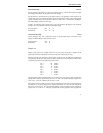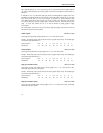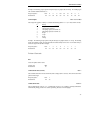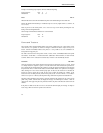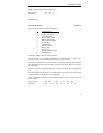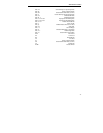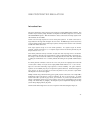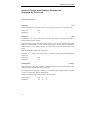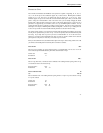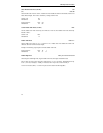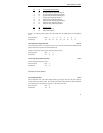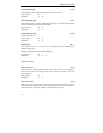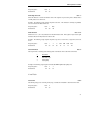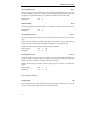45
IBM PROPRINTER EMULATION
Introduction
This section describes the control codes and escape sequences comprising IBM Proprinter emulation. This
emulation may be selected by setting “Emulation” to “Proprinter” in the interface setup menu, or via software
with the ESC ESC 4 sequence. While this emulation is selected, control codes and escape sequences from
other emulations are not available.
Control codes and escape sequences are used to control printer operation. An ASCII control code is a
single character in the range 00 hex through 1F hex, and 7F hex. The ESC (Escape) control code (1B hex)
is used to introduce character strings called escape sequences, which provide an extension of the commands
available with ASCII control codes.
Some escape sequences accept one or more numeric parameters. If a sequence accepts one numeric
parameter, it will be represented as “n”. If a sequence accepts more than one numeric parameter, they will
be represented as “n1 n2 ... nx”.
Since numeric parameters are always encoded in one byte, their values may range from 0 to 255 decimal.
Please note that the value will never be represented by a string of ASCII decimal digits (“0” through “9”).
For example, a value of 66 decimal would be sent as a single byte with a hex value of 42. This is equivalent
to sending the ASCII character “B”. It is entirely different than sending the two printable ASCII characters
“66”.
If a numeric parameter is limited to a value of zero or one, it may be sent as a single byte with a value of 00
or 01 hex (NUL or SOH), or it may be sent as a single printable ASCII character “0” or “1” (30 or 31 hex).
Spaces are used when documenting escape sequences to increase readability. The spaces within the
sequences are for readability only; they are not part of the sequences themselves. Characters that appear in
italics (such as “n” and “n1 n2” above) are not sent to the printer as is; they are used as a place holder
indicating that some value must be supplied.
Multiple character strings without intervening spaces typically represent control codes. For example, BS is
the Backspace control code (08 hex), not the two characters “B” and “S” (42 and 53 hex). An ASCII
Control Code Table is provided on page 109 for your convenience. If you have any doubt about how to
interpret a documented control code or escape sequence, refer to the hex representation in the provided
example. This should clarify any ambiguity. The examples may also be helpful when analyzing a hex dump
(see Hex Dump chapter) printed by the printer.
Column and line numbers begin at one, not at zero. Keep this in mind when setting tabs, margins, etc.



